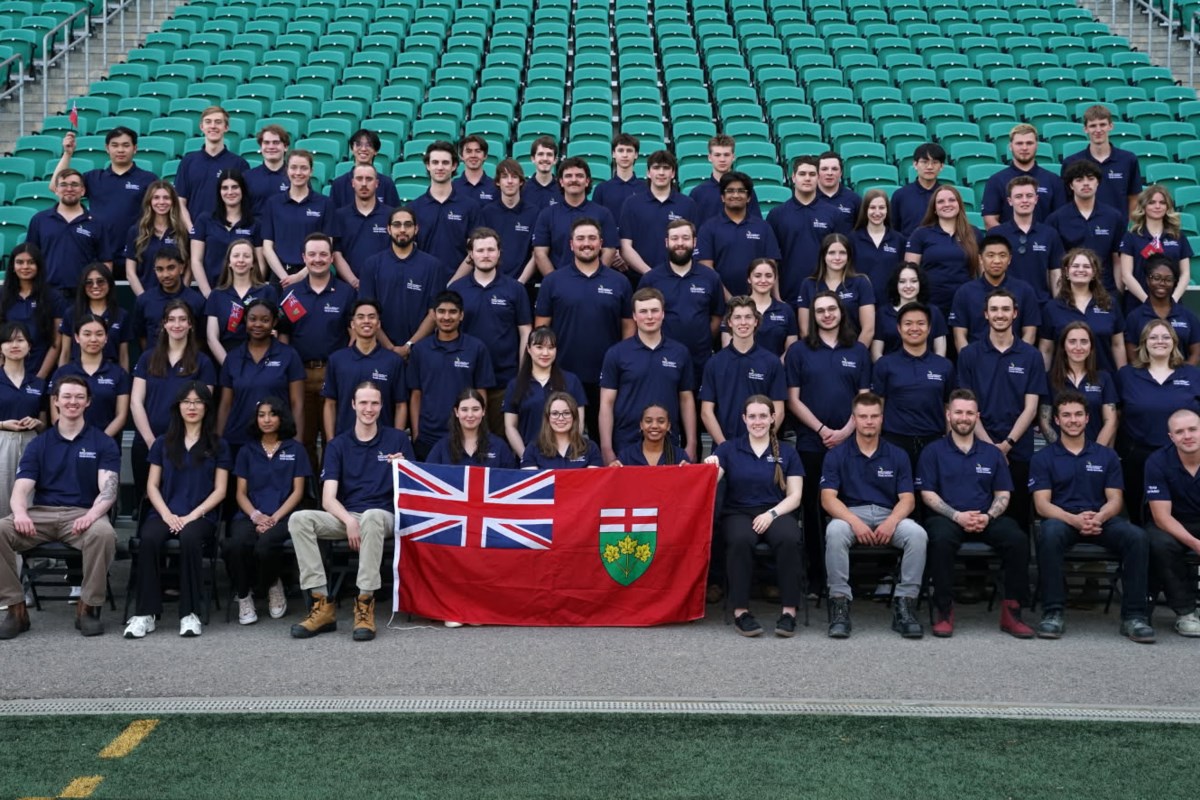The sun is at an exciting stage of its solar cycle.
Millions people across North America witnessed that first hand in early May, when a vibrant and widely visible aurora lit up the night sky.
In Part 1 of The Dark Side of the Aurora, we looked into historic geomagnetic storms that created equally, if not larger, auroras, that caused disruptions to critical infrastructures like the Hydro Quebec power grid in 1989.
Now, let’s look at the risks our technology-reliant civilization may face today in the event a severe geomagnetic storm hits earth, and who monitors space weather activity for Canada.
‘You have 30 minutes’
The department of government responsible for monitoring space weather in Canada may surprise you.
It’s not the Canada Space Agency or NORAD, but rather Natural Resources Canada.
 Natural Resources Canada’s geomagnetic laboratory in Ottawa. (Natural Resources Canada)“We have a rotating group of space weather duty forecasters who are on call 24/7 for monitoring space weather conditions,” explains Kyle Reiter, space weather analyst at Natural Resources Canada.
Natural Resources Canada’s geomagnetic laboratory in Ottawa. (Natural Resources Canada)“We have a rotating group of space weather duty forecasters who are on call 24/7 for monitoring space weather conditions,” explains Kyle Reiter, space weather analyst at Natural Resources Canada.
Reiter says he was on shift in the lead up to the May event and “seeing those CME’s and seeing that they were directed potentially towards the earth. We had two or three days of notice to know that there was this potential activity headed our way.”
When scientists first see a solar flare or CME, to when they can assess the impact the storm could pose on critical infrastructure, becomes a bit of a waiting game.
“The time scales aren’t great, to be honest,” explains Dan Welling, assistant professor, University of Michigan’s Department of Climate and Space.
“By the time the solar material is close enough to assess, you have 30 minutes, and that’s a very short time to respond.”
‘Dark side of the aurora’
David Boteler is head of the space weather group at Natural Resources Canada, and spends his time researching the hazards that come from geomagnetic disturbances.
“I actually got recruited to work here specifically as a result of that March 1989 storm,” said Boteler.
“It was a bit of a wake up call, and there’s been a lot of research done since then.”
Boteler’s research helps determine how these intense surges of geomagnetic activity affect various systems like the power grid, pipelines and radio communications.
“And then we do a lot of work with industry to do risk assessments for them, and to help mitigate these effects.”
Tech analyst Ritesh Kotak points out stakeholders in telecommunications also need to be prepared for geomagnetic storm blackouts, following the July 2022 Rogers outage that affected millions of Canadians.
“It showed us how dependent we were on this technology, and just the widespread effects it has on every element of our life.”
While the Rogers outage was caused by an internal network update gone wrong, Kotak says problems due to the environment will intensify as we become more reliant on technology like satellites for internet.
“It is very expensive to lay [internet] cables,” said Kotak.
“And because that’s very expensive, we are seeing more infrastructure that is being introduced that involves a satellite-related communication.”
A satellite tracking website called Orbiting Now indicates there are 10,010 “objects” orbiting the earth as of June 1st, 2024. More than 80 per cent of those “objects” are Low Earth Orbit (LEO) satellites.
More than half of the LEO satellites are used for communications purposes and have been launched from the United States.
Elon Musk’s Starlink make up a large portion of these LEO satellites.
“And they are in the traffic zone of all these energetic particles that are coming from the sun,” said Phil Langill, director of the University of Calgary’s Rothney Astrophysical Observatory (RAO).
“They are big balls of electronics basically, so there is the potential for trouble.”
Langill explains several factors have to be at play for a geomagnetic storm to wreak havoc on man-made infrastructure.
The quantity and the speed of the sun’s solar ejection needs to be received by earth when its magnetic field is also in disarray.
“The earth’s magnetic field is kind of a big broad net… so it can concentrate things and make things worse, or it can spread things out and make things less risky.”
When the perfect storm does approach earth, it can cause two problems to LEO satellites.
“One is the electrons and protons flying around in space are going so fast they can go right through the skin of the spacecraft into the electronics inside and can burn them out,” states Boteler.
The second impact is the heat that is produced during a geomagnetic storm. It causes the atmosphere where the satellites are orbiting to expand which results in the spacecraft slowing down, also known as drag.
“As soon as it starts to slow down, that’s the beginning of the end for the satellite,” explains Langill.
This could result in interruptions and delays to cell services, but satellites deeper in space that are used for high precision GPS are also vulnerable to these storms.
“We had these effects on farming equipment during this past storm, and typically anything military or oil drilling that requires high precision GPS, they will stop operations during space weather storms like this, until they get the all clear,” said Welling.
Reiter says another sector paying attention to geomagnetic activity is radio communications.
“Particularly for airplanes at high latitudes,” he said. “So looking at trans-polar flights where increased absorption of radio waves can result in disruption of the operation of those High Frequency communications for planes flying at high latitudes.”
“The aurora is the visible manifestation of these magnetic storms,” said Boteler.
“We sometimes refer to all these other effects as the ‘Dark side of the aurora.'”
‘Don’t get crazy’
While the thought of a looming Carrington Event 2.0 is daunting, Welling says you don’t have to lose sleep over it.
“I would also take comfort in the fact that this is a topic where governments and scientists and power grid operators are working really hard to address.”
From Natural Resources Canada to NOAA and NASA, there are scientists and researchers in government and private industry constantly studying the sun and how it can impact our way of life.
“I would also take comfort in the fact that this is a topic where governments and scientists and power grid operators are working really hard to address it.”
From Natural Resources Canada to NOAA and NASA, there are scientists and researchers in government and private industry constantly studying the sun, and how it can impact our way of life.
“There are institutes around the world that study nothing but the sun. There are satellites going around the sun to study it up close and personal,” said Langill. “Don’t get crazy, things happen, but it’s not catastrophic.”
The May 2024 event actually served as an important opportunity for New Zealand to test out its Solar Tsunamis program.
It’s an action plan created by scientists to make the island nation’s power grid more robust during extreme space weather events.
“And for the first time, Transpower New Zealand activated this plan to ensure this [May] storm would not have impact on the people of New Zealand,” explains Welling.
“It’s hard to say how effective that plan was, but just knowing that they had it and they were able to enact it is a really big deal.”
At Natural Resources Canada, when Reiter or other members of the space weather team detect what could be a major geomagnetic storm, they first notify members in their departments’ chain of management so they have an awareness of an ongoing space weather event.
 Natural Resources Canada (Natural Resources Canada)“The next thing we do is notify the Government Operations Centre, so they’re responsible for monitoring and distributing information from across the whole of government to other levels of government as well as to industrial partners.”
Natural Resources Canada (Natural Resources Canada)“The next thing we do is notify the Government Operations Centre, so they’re responsible for monitoring and distributing information from across the whole of government to other levels of government as well as to industrial partners.”
So when it comes to geomagnetic storms and the impact on human civilization, it is a bit of a paradox.
While our dependence on technology makes us more vulnerable than ever to the risks of these storms, we’re also the most aware and prepared for the worst because of the technology we have.
So sit back, relax and enjoy the show.



